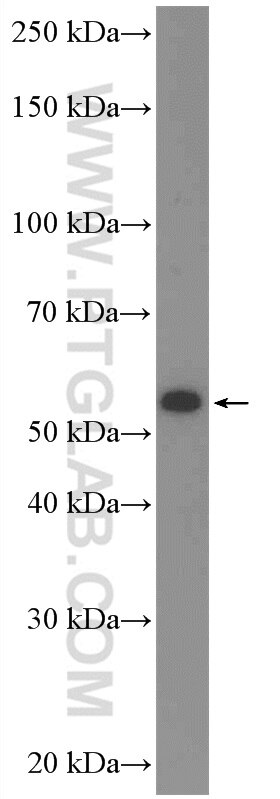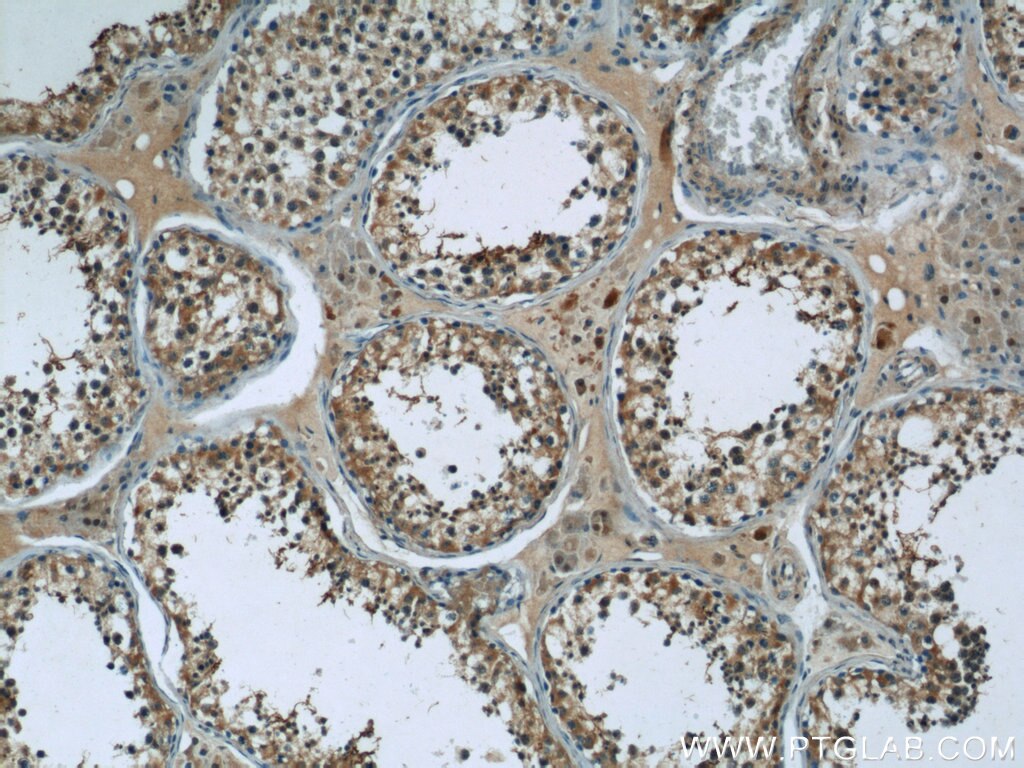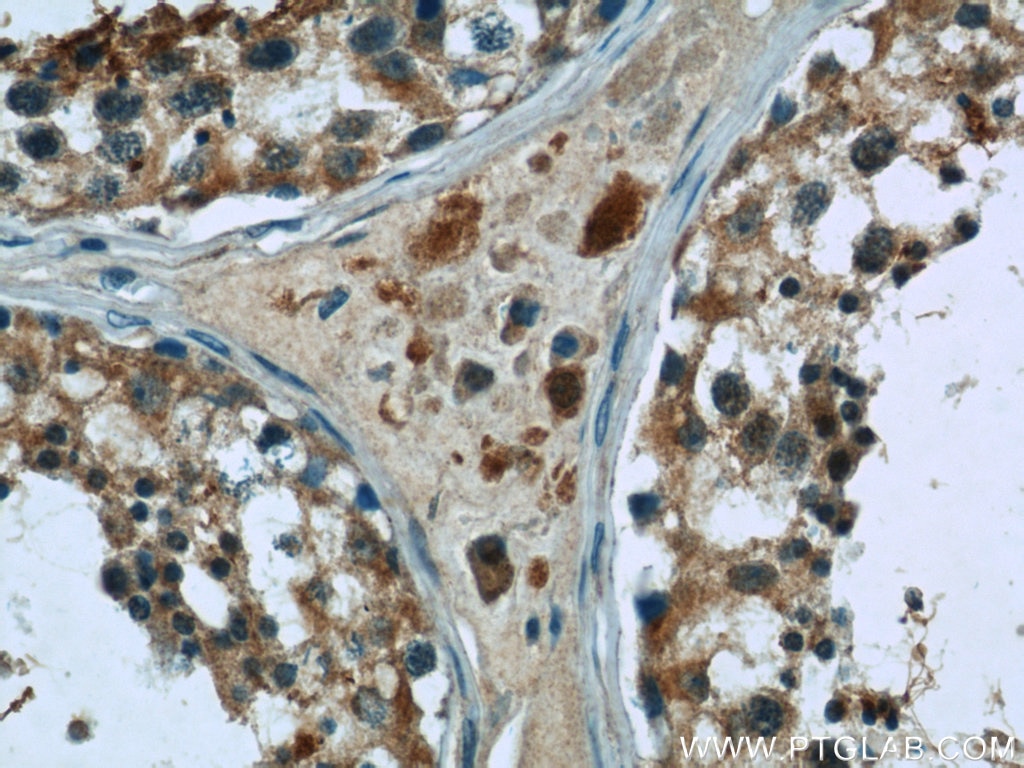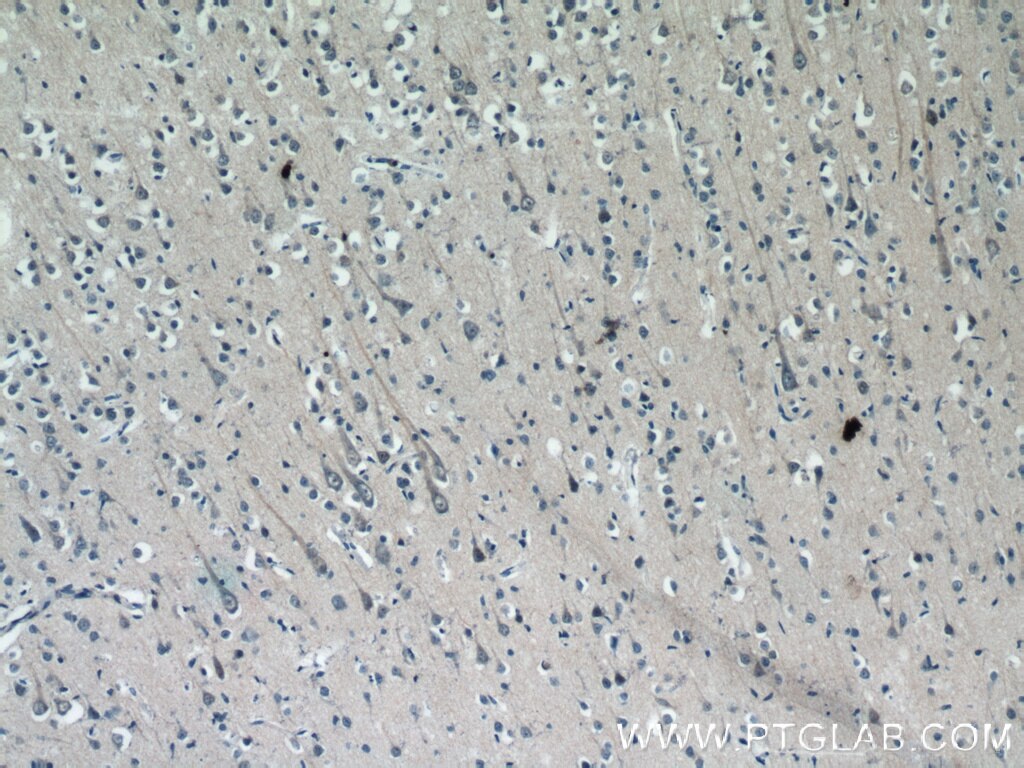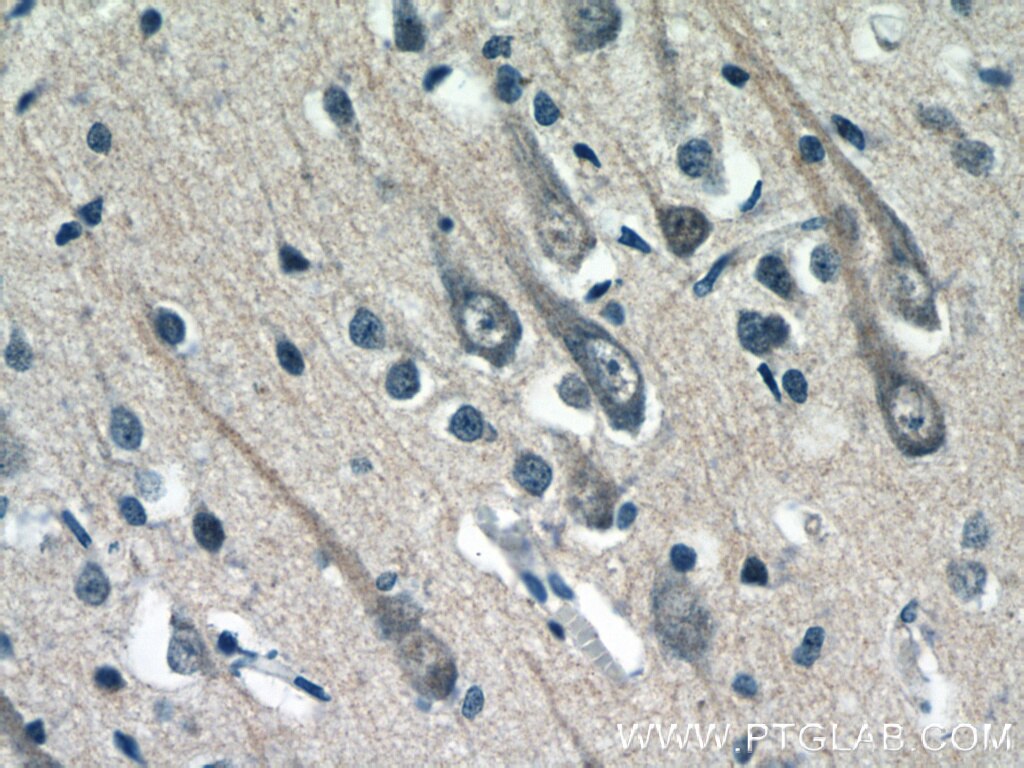Tested Applications
| Positive WB detected in | L02 cells |
| Positive IHC detected in | human testis tissue, human brain tissue Note: suggested antigen retrieval with TE buffer pH 9.0; (*) Alternatively, antigen retrieval may be performed with citrate buffer pH 6.0 |
Recommended dilution
| Application | Dilution |
|---|---|
| Western Blot (WB) | WB : 1:200-1:1000 |
| Immunohistochemistry (IHC) | IHC : 1:20-1:200 |
| It is recommended that this reagent should be titrated in each testing system to obtain optimal results. | |
| Sample-dependent, Check data in validation data gallery. | |
Product Information
24629-1-AP targets C17orf46 in WB, IHC, ELISA applications and shows reactivity with human samples.
| Tested Reactivity | human |
| Host / Isotype | Rabbit / IgG |
| Class | Polyclonal |
| Type | Antibody |
| Immunogen |
CatNo: Ag18239 Product name: Recombinant human C17orf46 protein Source: e coli.-derived, PGEX-4T Tag: GST Domain: 1-384 aa of BC028124 Sequence: MGVTGAHGFPCCGKGSVEVAEMRDDLSQHQIQEEQELEADMLEQKPQLQVDLDLDPDPDPDPELEIGQVPALLESELYPALKLEAELDTEANSNEESDFEEPMQLVCKIESVHSNMGLPTPQTFRPWSLNSNCRSFTEENHMSACHHSISAQTSKHLFWANKLIQASEHSLQRAINMQLNNGSAGQPIRSPLREAIPTNALCSEEQLQIPDAHSAPPTTSSQAPSPLLSSDLPPPIDLTELITFASSLAMASSSRMDLPSLEHMMKAPPQEALEPSTEPLLTTVEEREPENHAETLPEKPREARAPLKSWSQEDKNFAQSYFDFSKPGIKRATIKGQIQLLQPPATSPLLQGSKEDSVPPGKEKENPLLVKIHFKLSAPTIPEK Predict reactive species |
| Full Name | chromosome 17 open reading frame 46 |
| Calculated Molecular Weight | 384 aa, 42 kDa |
| Observed Molecular Weight | 42-52 kDa |
| GenBank Accession Number | BC028124 |
| Gene Symbol | C17orf46 |
| Gene ID (NCBI) | 124783 |
| RRID | AB_2879646 |
| Conjugate | Unconjugated |
| Form | Liquid |
| Purification Method | Antigen affinity purification |
| UNIPROT ID | Q96LK8 |
| Storage Buffer | PBS with 0.02% sodium azide and 50% glycerol, pH 7.3. |
| Storage Conditions | Store at -20°C. Stable for one year after shipment. Aliquoting is unnecessary for -20oC storage. 20ul sizes contain 0.1% BSA. |
Background Information
C17orf46, also named as SPATA32 and TEX34, mainly expressed in Testis. It interacts with syntaxin-1 and ACTB. It's abou 42-52 kDa in our detection.
Protocols
| Product Specific Protocols | |
|---|---|
| IHC protocol for C17orf46 antibody 24629-1-AP | Download protocol |
| WB protocol for C17orf46 antibody 24629-1-AP | Download protocol |
| Standard Protocols | |
|---|---|
| Click here to view our Standard Protocols |

